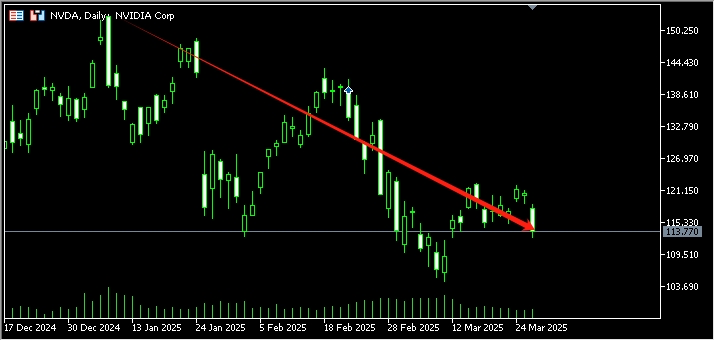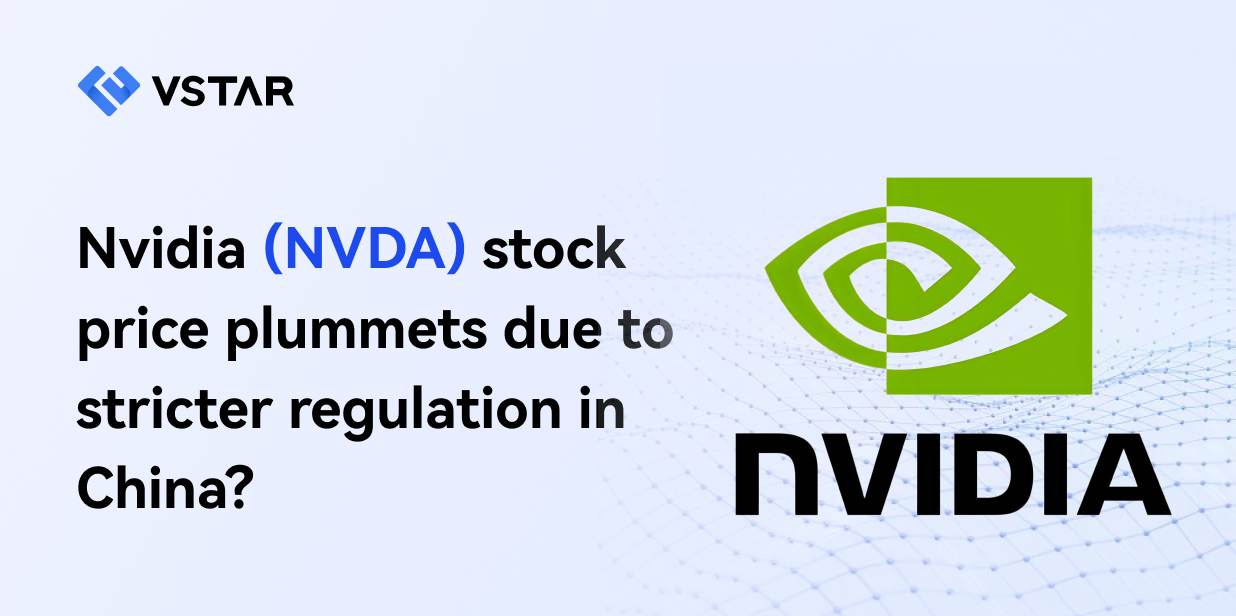Recently, NVIDIA (NVDA) stock price has continued to fall. As of March 27, 2025, its market value has evaporated by more than $1 trillion from its historical high and hit a six-month low. Although there are frequent speculations about China's regulation in the market, comprehensive analysis from multiple sources shows that the core reason for the stock price drop is more likely to be related to the intensified competition in the global AI industry, supply chain risks and investors' concerns about the sustainability of AI demand. The following is an analysis from two aspects: the reasons for the plunge and future trends.

Multiple reasons for the stock price plunge
1. Intensified competition in the AI industry and demand uncertainty
- With the launch of the "low-cost + high-performance" open source model by Chinese AI startup DeepSeek, the market has questioned NVIDIA's monopoly in the field of high-performance computing. Although the rise of DeepSeek may increase demand for Nvidia GPUs (as it requires higher computing power), investors are still concerned that it may weaken the US's dominance in the field of AI, thereby affecting Nvidia's long-term growth space.
- Chip manufacturers such as Broadcom (AVGO.US) are facing increasing competitive pressure in the field of AI-specific chips. Although Nvidia CEO Huang Renxun questioned the market feasibility of competitors' products, the market's sensitivity to technology substitution risks has increased significantly.
2. Supply chain and policy risks
- Tariffs and geopolitics: The potential US chip import tariff policy poses a threat to Nvidia's global supply chain. Although the company emphasizes the flexibility of its supply chain and plans to expand local manufacturing, policy uncertainty still triggers investors to sell.
- Regulatory concerns in the Chinese market: Although there is no direct mention of tightening Chinese regulations, China, as an important market for Nvidia, its trend of technological autonomy (such as promoting domestic substitution) may indirectly affect Nvidia's market share. In addition, the long-term background of the Sino-US technology game has intensified the market's assessment of Nvidia's business risks in China.
3. Performance expectations and market sentiment diverge
- Although Nvidia's fourth-quarter financial report for fiscal year 2025 exceeded expectations, the "mixed" guidance for the first quarter of fiscal year 2026 led to insufficient market confidence in its short-term growth. Some analysts believe that the sustainability of AI investment and the slow monetization of large language models (LLM) have not been resolved, exacerbating stock price volatility.
- Bearish bets in the options market further amplified the downward trend. For example, some traders bet that Nvidia's stock price would fall to $115 by March 7 (a 4% drop from the closing price at the time), and this pessimistic expectation resonated with market sentiment.
Controversy and outlook for future stock price trends
1. Short-term volatility may continue
- The current market's expectations for the AI industry have shifted from "fanatical" to "rational". Zacks Investment Management pointed out that the volatility of AI-related stocks reflects the diversification of market expectations, and Nvidia may continue to be constrained by supply chain noise and competitive pressure in the short term.
- Technically, a break below a key support level (such as a six-month low) could trigger further selling, but a technical rebound after an oversold price is also possible.
2. Long-term growth potential remains
- Technology leadership and product iteration: The new generation of products such as Blackwell Ultra and Rubin AI servers released by Nvidia at the GTC 2025 conference have significantly improved performance compared to existing models and are expected to be gradually implemented from 2024 to 2027. Huang Renxun emphasized that the demand for GPUs in data centers continues to grow, and the planning of million-level GPU clusters supports the long-term growth logic.
- Expansion of the AI ecosystem: The company's layout in the fields of robots and autonomous driving may become a new growth point. Stifel and other institutions believe that Nvidia's leadership in the field of AI infrastructure is difficult to shake, and its synergy with analog connectivity and processor sub-industries will gradually emerge.
3. Valuation divergence and investment opportunities
- Barron's pointed out that Nvidia's current expected price-to-earnings ratio is only 26 times, which is significantly underestimated compared to the 57% revenue growth rate. If the market gradually digests competition and policy risks, there is a large room for valuation repair.
- Some investors, such as Duan Yongping, have begun to deploy through option strategies, believing that Nvidia is still the core target in the AI wave, and short-term fluctuations may provide entry opportunities.
Conclusion
The plunge in Nvidia's stock price is the result of multiple factors. Chinese regulation is only one of the potential risks, not the dominant factor. In the future, its stock price trend will depend on the actual progress of AI technology implementation, supply chain stability and the evolution of the global policy environment. In the short term, volatility may continue, but in the long run, Nvidia's technological barriers and ecological layout still provide it with a strong moat. Investors need to weigh risks and opportunities and pay attention to key variables such as financial guidance, competitive landscape and geopolitical trends.
*Disclaimer: The content of this article is for learning only, does not represent the official position of VSTAR, and cannot be used as investment advice.




